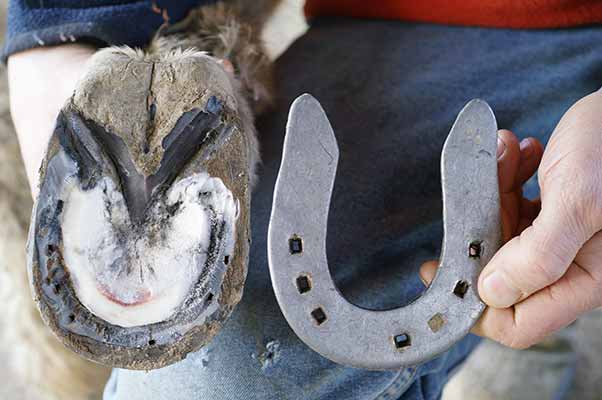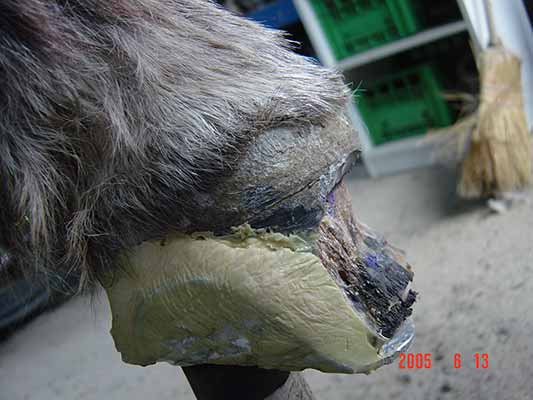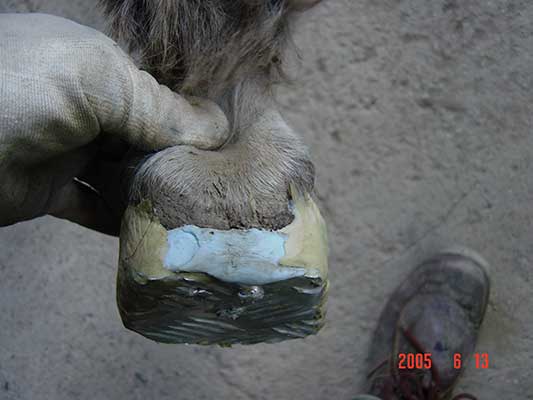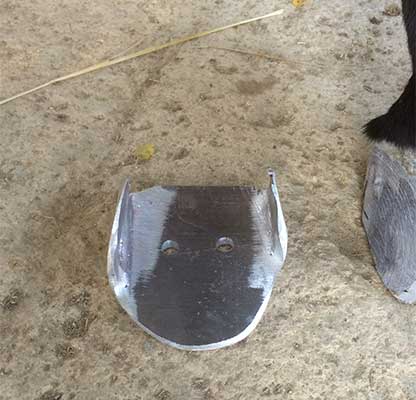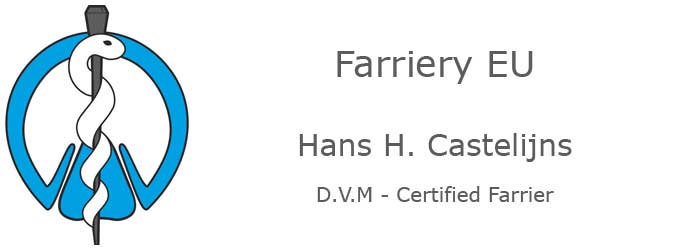 |
The foot of the Donkey. |
||||||||
Donkeys are getting more and more popular in the west, mostly as a sort of pets, since they have a great character, but they need hoof care just as much, if not more than horses. Donkeys (and mules) not only have very different feet from horses but also a different mindset; to allow themselves to be worked on they want to check you out thoroughly first, so take your time to introduce yourself calmly and with respect if you don’t want a serious fight. Their feet are thick walled, with very steep side walls, a “lira” form, a frog which is placed further back relative to the hoof and often a -naturally for them- broken forward hoof-pastern axis. (fig.1-2) |
||||||||
|
||||||||
To trim them you should therefore not attempt to lower the heels so as to get a straight hoof-pastern axis, and it is nearly impossible and not required to get the heels back to the widest part of the frog. They like a bit of a rockered toe in the trim and you have to be careful in the latero-medial balance; if you leave one side slightly to long, relative to the other side of the hoof, they can quickly develop a crooked hoof with one side wall turning in because their side walls are so steep to begin with. In the sagittal plane they can develop huge distortions also, mainly due to neglect of the owners and the lack of wear and work on soft surfaces. (fig.3,4 |
||||||||
|
||||||||
Donkeys and mules are prone to onychomycosis (white line disease), and often this is only discovered when the animal is lame due to the sinking of the coffin bone. As, by that time, the destruction of the inner hoof wall layers usually has progressed nearly up to the coronary band, treating these can be a challenge. Donkeys working very hard (which is rare in the west) and more often donkeys suffering from onychomycosis may need shoeing, as other wise the open white line gets filled with debris causing repeated abscesses. Donkey shoes need very coarse nail holes, as their walls are much thicker in proportion to horse hoofs, with the nail holes concentrated towards the toe area, as the quarter walls are less indicated for nailing due to the lira shape of the hoof. It is also a challenge to shape the inside of the heels of the shoe so as not to cover to much of the lateral and medial sulci of the frog. In other words, it is usually not a good idea to use a modified horse(pony) shoe. (fig5) |
||||||||
|
||||||||
Donkeys are very frugal and easily get fat on the easy life and are therefor prone to laminitis. This together with the frequent need for dorsal resections of the hoof to treat severe onychomycosis has led the author to develop a side clip aluminium glue on system with a frog-sole cushion of silicone (Luwex premium Rehe or premium Sport). Once the aluminium platform, with its big side clips at the level of the usually sound quarter walls, is shaped, the imprint of frog supporting silicone is made and when set, the whole is glued on to the side walls with poly methyl methacrylate. The hoof is then treated at the site of resection with a tincture of gentian blue and formaldehyde and let to grow out. (fig.6,7,8) |
||||||||
|
||||||||
Donkeys have a different fat metabolism from horses and when fat laminitic donkeys are put on a crash diet to lose weight they can get lipidosis with fat in the blood and steatosis (fatty liver). It is therefore quite a challenge to make such donkeys loose weight, which is best done with an energy poor, high fibre diet together with the addition of a high quality -multi vitamin (especially B vitamins) and trace element containing- supplement. You certainly don’t want to starve them! |
||||||||
Hans Castelijns
D.V.M - Certified Farrier




